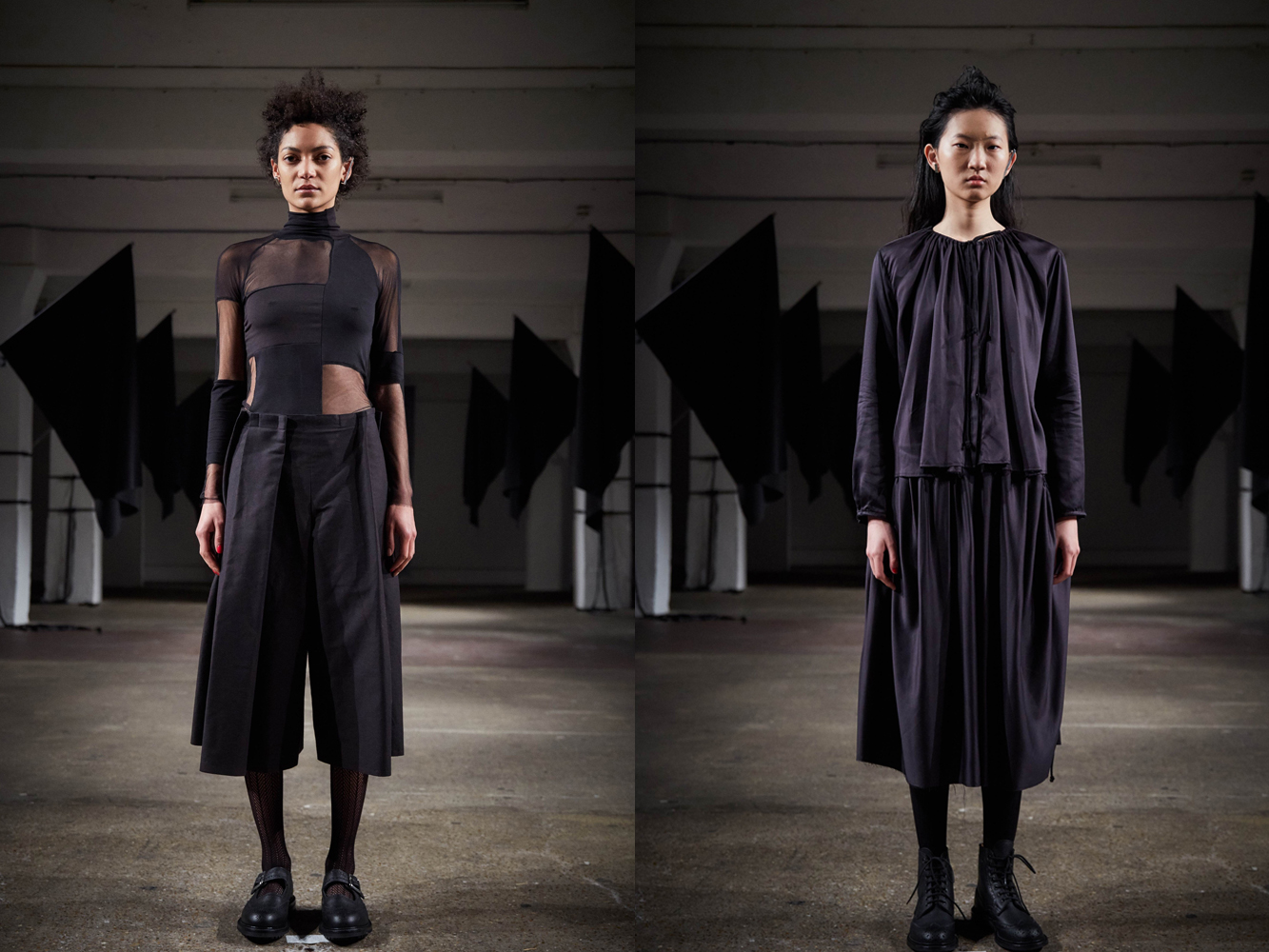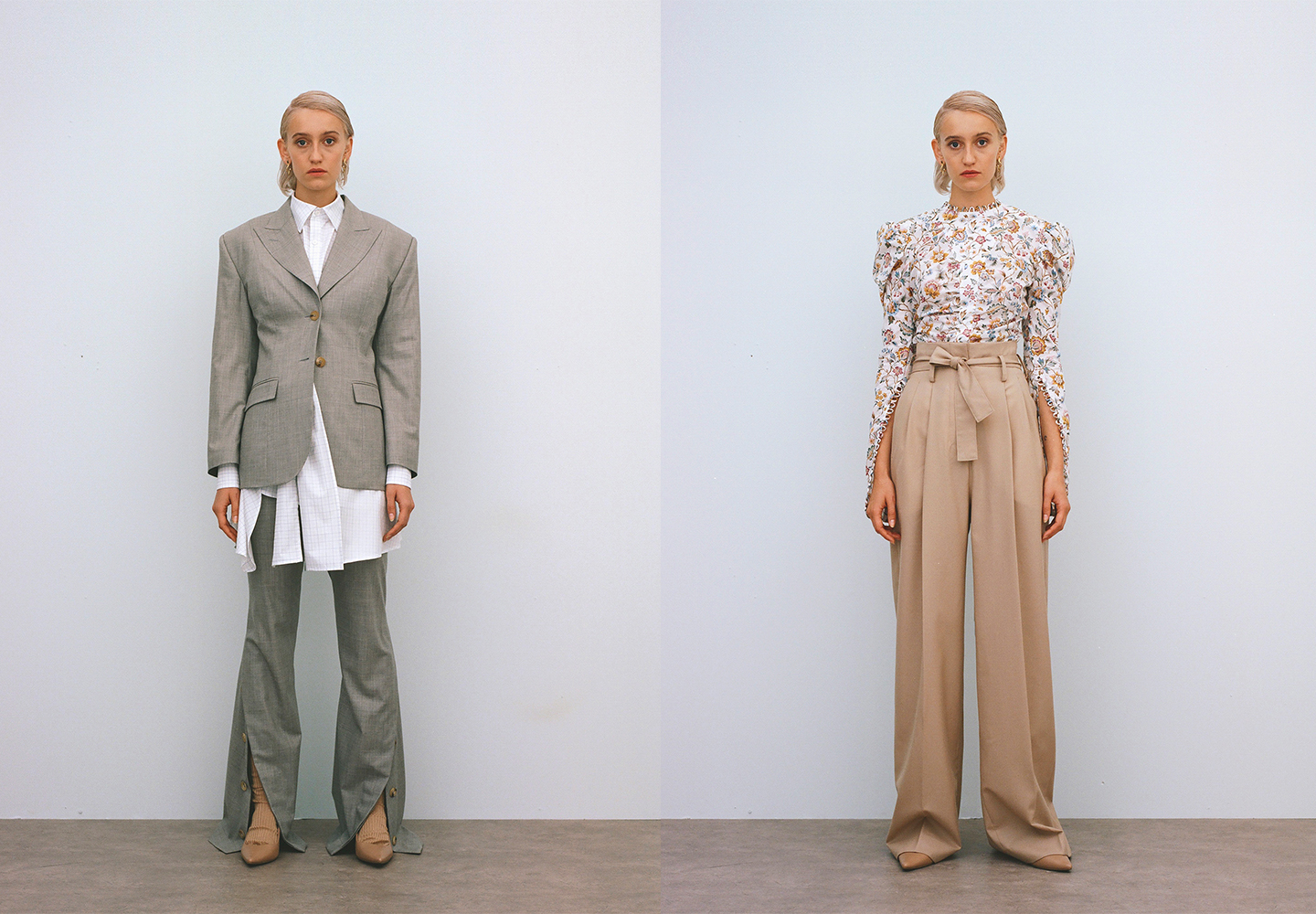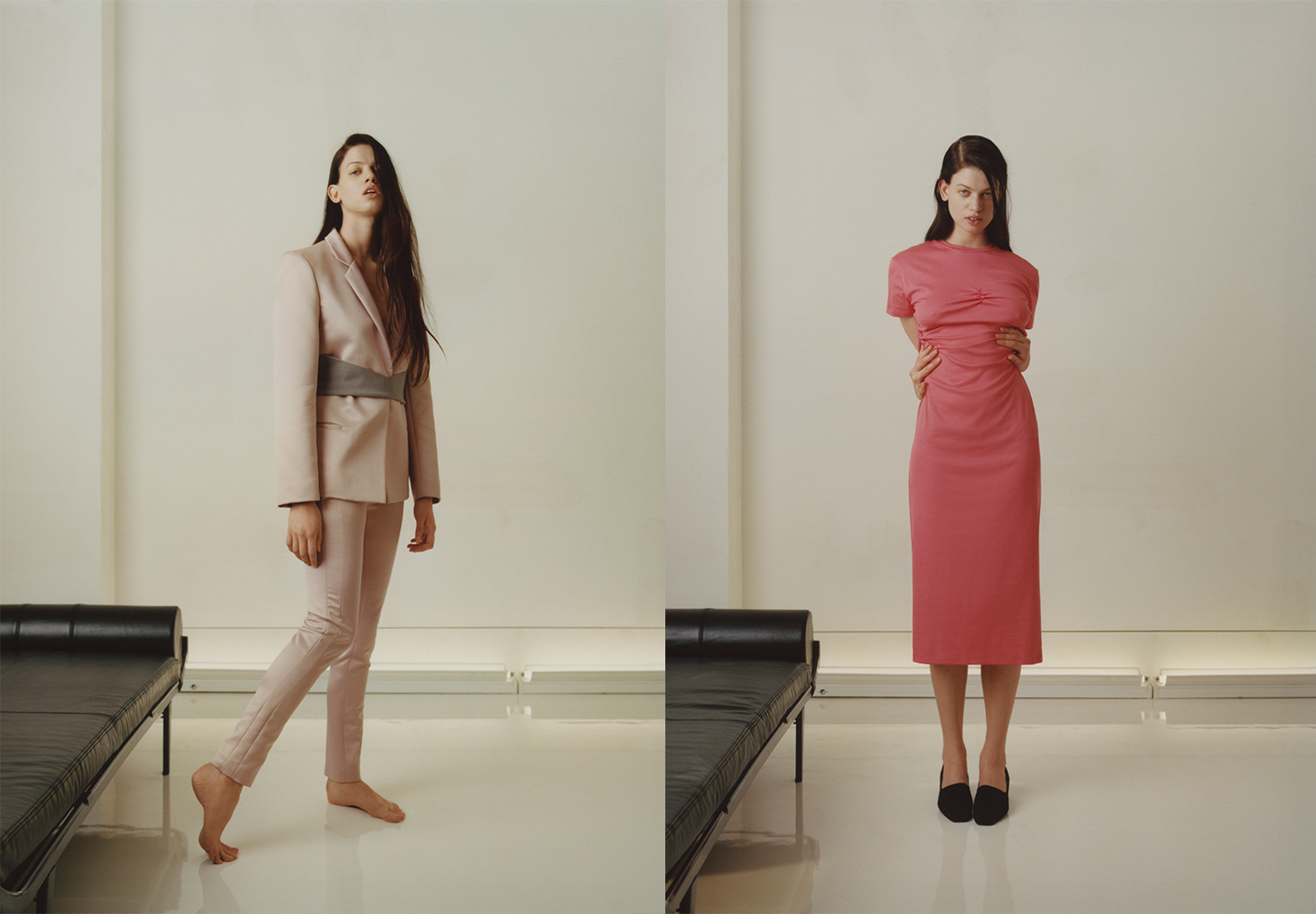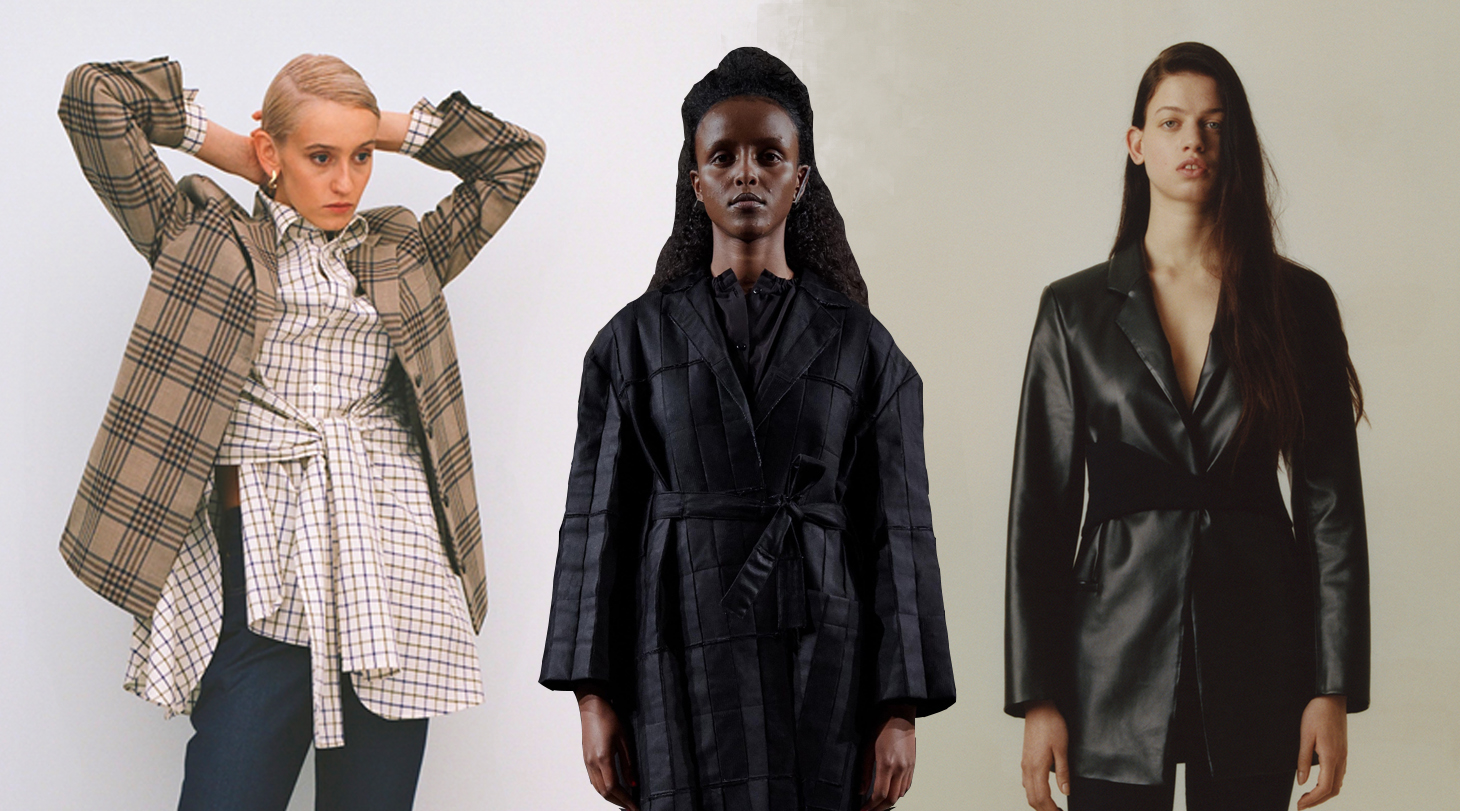The tried-and-tested trajectory to become London’s splashiest new fashion designer is now sacrosanct: a stint at Central Saint Martins, a place on the Fashion East roster, and then continued support from the British Fashion Council’s NEWGEN scheme to get you off the ground until outside investors come in to help you enter the big leagues. It is a formula that has bred success for some of the city’s most important brands, from Christopher Kane to JW Anderson.
But over the last few years, there’s been a new generation coming up through the ranks by doing things altogether more quietly — and amassing cult followings in their wake. It might sound obvious, but for many of those studying at London’s esteemed fashion schools, it’s easy to forget there’s more than one way of launching a label.
“Fashion is one of the most flexible business sectors that there is, and when you’re working in such an agile sector, you have to respond to change,” says Phoebe English, who launched her namesake label in 2011 and has built it up since at her own pace, rather than subscribing to the relentless cycle of seasonal collections. “Change is what the industry is built on, the very nature of it is changing constantly: the silhouettes, the colours, the surface decoration. Now it’s time to look at the infrastructure and make some systemic changes.”

Phoebe’s collections are notable for their balance of the innovative and the practical: she notes that each sample is thoroughly road-tested on friends and colleagues before it enters the production stage. She also remembers a specific turning point where she decided to slim down the collections she was taking to show to buyers. “At the time it felt kind of terrifying and a little bit reckless, but I had an instinct it was the right decision to make. If I’m making stuff nobody’s ever going to order, it just feels wasteful.”
It’s this emphasis on responsibility — both environmentally, and in a broader sense — that unites the more modest ambitions of this generation of designers, as well as their embrace of a more pared-back aesthetic that isn’t the typical route for London designers wanting to make a splash. “Obviously, we’re not really in it just to make money: you have to find a way for it to be interesting to you,” says Roni Ilan, whose background in menswear has seen her androgynous take on the codes of minimalism become a cult favourite for customers of all genders since it was launched in 2016.
“For me, it’s always about how the clothes will be worn,” Roni explains. “I love thinking about the life of the garment after it’s been shown and sold. All of my lookbooks are shot in homes. They’re clothes that you can wear out, but you can also really live in, rather than some kind of showpiece. Not that I don’t appreciate that kind of design, I love McQueen and Galliano and all of that, but I think we’re in a different place now. It’s less about fantasy, and more about the reality of how you feel in a piece of clothing and what you want to wear.”
The London-based designer duo Wright Le Chapelain, who established their label in 2017 after stints working for labels like Burberry and Margaret Howell, have a similar outlook, and their oversized shirts and thoughtful tailoring have won them a small but growing fanbase. “When you know the impact that our industry has on our social and natural environment, we don’t think it can be any other way,” they explain. “It was always on the top of our list when we were talking about starting the brand. To make the best choices for the environment and the people we work with, each season we are learning and becoming more sustainable as a company.”

It’s also a product of all the designers’ life experience before launching their label, or in Phoebe’s case, the slow and steady process of building up a new brand outside of the overwhelming buzz that can surround the latest Central Saint Martins graduate being declared fashion’s next big thing. Roni notes that her approach to starting a label changed completely after having a child, while Wright Le Chapelain are keen to emphasise how important taking some time out to work at other houses was when it came to deciding exactly what they wanted their own label to look like, both from a design and a business perspective.
“Working for other designers gives you an understanding of how a successful company is run and what an efficient fashion studio looks like,” say Wright Le Chapelain. “You learn how to solve diverse problems, work with many different people and build a network that you can turn to for support.”
It seems also that today, there’s a greater awareness of the relentless seasonal pace and insane workloads that have led to many top designers suffering from mental health issues and public meltdowns. Being at the helm of a global mega-brand no longer carries the same attraction it might once have. “Of course I want the brand to grow,” says Roni, “and for more people to know about it, but I still want to be able to control all of the visual output from start to finish. I think that becomes really difficult when you’re very big, people are always asking so many things of you, and there’s so much expectation: you have to be making a collection that really sells every season. I just want to be selling it to people who really understand it.” It’s this ethos that allows Roni to invest something personal into each collection, with the current season including pieces that are infused with her native Israel quite literally, having been hand-dyed with mud from the banks of the Dead Sea.
It’s also this ongoing dialogue with customers that has contributed to the slow-burn success of all three labels: in place of the dictatorial outlook of designers of generations past — hemlines are up this season, colour blocking is out — their decision to scale up slowly has also allowed them to foster relationships with their client base that are more open and responsive. “It feels like we’ve been going for quite a long time now,” Phoebe adds, “especially when fashion years are a bit like dog years. But there are customers of mine who bought from the very first collection, and have continued to buy every season. They basically have archives of the entire history of my work, which is really flattering and incredible, to have people following what I do with such loyalty.”

This longevity translates to the clothes themselves. Instead of radically reinventing the brand each season, all three designers have followed natural progressions that exist almost as multi-season capsule wardrobes, without any emphasis on It pieces that have a tendency to date: they are timeless clothes designed to be as long-lasting as they are immediately appealing. Where Phoebe injects her dresses for women and tailoring for men with a flavour of the Gothic, Roni’s designs have a breezy flair that speaks of her Eastern Mediterranean upbringing. Wright Le Chapelain, meanwhile, are interested in subverting the conventions of officewear, taking buttoned-up staples and giving them a playful twist.
But while each designer has their own take on modest dressing, what unites them is their aim to reward their loyal customers by making sure every collection complements the last. “I don’t really look at it as something strictly seasonal,” adds Roni. “It doesn’t really make sense to me to wear something for four months and then stop. The most important thing for me is to look at the collections I’m making now in five years and see if they are still relevant.”
More than anything, however, this new crop of labels are an object lesson for those still studying, or wanting to strike out with their own brands, that there are so many paths and trajectories you can take — particularly in an age where sustainability is becoming an increasing priority for young designers. “If you run a business, you have to ask yourself, should we still be working in this way?” says Phoebe. “Are we still judging success in terms of turnover? You need to be constantly reevaluating things, or you just become irrelevant. Although, now, the question isn’t whether we’re going to become irrelevant, it’s whether we are going to become extinct.”
What all the designers can agree on is that breaking out of the rigid strictures of how fledgling labels previously developed into viable, long-lasting brands is something that could only have come out of one city. “London is the one place where we can pioneer doing things in a different way,” Phoebe concludes. “It’s such a liberal place, where there is no right or wrong way of living or eating or dressing. If we can do it anywhere, we can do it here.”

